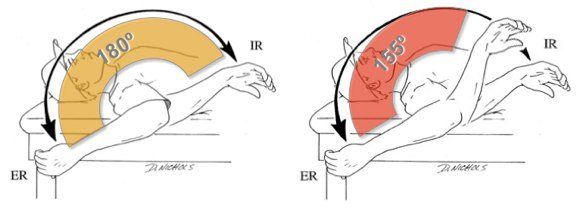GIRD, Glenohumeral Internal Roation Defecit is one of the natural adaptations to throwing that occurs in the shoulder.

I once read that pitching is “... an injury in progress.” The mechanics and repetitive nature of pitching cause such unnatural forces through the arm that the body can’t help but attempt to adapt. One of the adaptations that occurs is that the muscles in the back of the shoulder get stronger and tighter. The Infraspinatus and Teres Minor muscles are important stabilizers in the shoulder and are engaged as a pitcher cocks their arm in preparation for the throw. As a season progresses, the posterior muscles become stronger and tighter than the anterior muscles. This uneven distrubution of strength causes the posterior muscles to act as a teather, forcing the shoulder joint to shift forward. It also prevent the shoulder from being able to approriately internally rotate. The forward shift of the ball in the socket causes wearing of the labrum and tendonitis of the biceps and the other rotator cuff tendon. Ultimately, this can lead to shoulder pain, decrease velocity or control, altered mechanics and elbow issues. This adaptation is very predictable but also very treatable. With a little guidance from a physical therapist, trainer or strength and conditioning coach, pitchers can incorporate the “Sleeper stretch” and rotator cuff exercises to achieve better balance in the shoulder.
